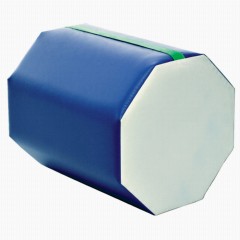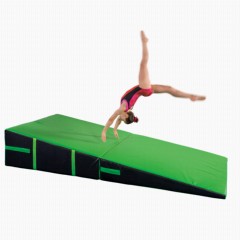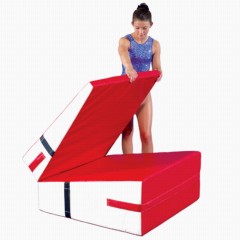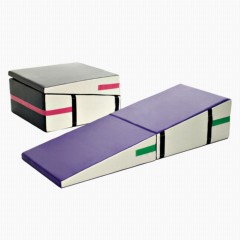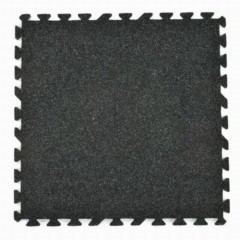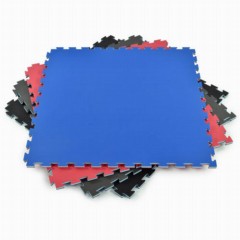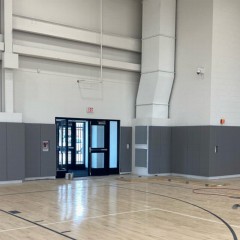Options for Sensory Room Mats
When attempting to create a room suitable for children with autism, special needs, or who simply need a break from the classroom, selecting the right sensory room mats is important for a successful installation. Whether you want to help children with special needs or provide safe spaces during therapy sessions, therapeutic floor mats from Greatmats can deliver the desired environment.
Greatmats offers multiple types of flooring, wall padding, and standalone mats of varying shapes that deliver textures and cushioning to protect and stimulate those using the room. Our products work for use at home, at school, or at a medical facility.
Types of Floor Mats for Sensory Room Uses
Having different textures on the mats is a desirable option. When students or kids are sitting on the floor in the sensory room, the texture can be an important part of creating the right kind of stimulation.
If customers prefer creating a sensory room that features multiple colors, our products are available in bright, bold, or neutral colors to match the desired look for the room.
Some of Greatmats’ specific types of flooring options include:
- Puzzle edge interlocking floor mats
- Folding gym floor mats
- Roll-out foam floor mats
- Wall mats
- I-beam mats
- Pole padding
- Column padding
- Landing mats
- Incline mats
- Octagon mats
Materials in Sensory Room Flooring
These mats and materials will have a durable design, ensuring they will last. Some of the most important materials found in our wall mats and padded flooring include the following.
- Vinyl Cover: Pads of all sizes and shapes often contain a vinyl cover that creates durability. The vinyl protects the cushioned foam on the interior. The vinyl layer also gives the pad its desired shape for use on the wall or floor.
- Cushioned Foam: Inside the vinyl cover, you’ll often find a soft foam padding that’s up to 2 inches in thickness. This foam absorbs impact when someone crashes into it, falls on it, or jumps on it, keeping everyone safe.
- Firm Foam: Floors made up of sensory room mats can feature a wide range of materials, all of which are durable. The interlocking floor mats consist of firm foam, which has a good mix of durability and cushioning.
- Plastic: Artificial grass rolls and some tiles will consist of flexible plastic, such as PVC, polypropylene, or polyethylene. These materials are comfortable, yet durable.
- Padded Carpet Tiles: Carpet tiles with foam backing are another option for a comfortable sensory room floor.
Where to Use Sensory Room Mats
These items will appear in a sensory room, helping a child or adult with developmental disabilities or autism to have a calm, safe place to relax as needed. They also help children who need stimulation to improve their fine motor skills.
Sensory rooms are useful in places like schools, libraries, and daycares. By using padding and comfortable materials, kids who struggle to calm down can remain safe from harm.
Homeowners can use them, too, in places like:
- Kids’ bedroom
- Kids’ playroom
- Basement family room
- Indoor playground or soft play area
- Kids’ quiet room
These wall pads and floor mats are also suitable for a range of use cases, such as athletic gyms, gymnastics studios, martial arts studios, or home gyms.
For customers who would like to be able to install these sensory mats for autism or special needs on their own, the majority of our products are easy to install. Standalone mats, such as octagonal and wedge mats, are meant to be portable, so do not use adhesive on them.
Sensory Room Mats Q&A
What are the best sensory room floor mats?
The
best sensory room mats will provide a combination of cushioning to keep everyone using the space safe and textured to allow for stimulation and experiences. Those using these specialty rooms need to be able to engage and explore safely, and the right flooring allows this.
What’s the best flooring for an outdoor sensory playground?
The
best flooring for an outdoor sensory playground should deliver the stimulation required for growth and development in this important soft play space, while ensuring the safety of everyone in the area. The flooring can deliver different textures and colors, while also creating a cushioned space to avoid injuries from falls.
Can you use folding mats in a sensory therapy room for flooring?
Deploying
folding mats in a sensory therapy room is an excellent choice that some Greatmats’ customers use currently with success. Such mats create a safe space for children climbing on the equipment, delivering cushioning if they fall. They are also easy to clean and have a pleasing look that encourages kids to play freely in the space.
How can you make a room that is padded to create a safe environment?
At Greatmats, we offer many products that work perfectly for a
DIY installation of a padded sensory occupational therapy room. Simply measure the room’s wall and floor space to figure out how much padding you need. You then can mount and secure the pads to the walls and floors with our DIY system or by hiring a professional installer. Our Greatmats customer service team can help you select and order the right number of products.
 $7999 /Mat You Save 11%$4.44/sqftShips Out in 3-5 Working DaysShop$635 /Tile You Save 38%$1.64/sqftShips Out in 1-3 Working Days Free ShippingShop$31692 /Mat You Save 5%$39.62/sqftShop
$7999 /Mat You Save 11%$4.44/sqftShips Out in 3-5 Working DaysShop$635 /Tile You Save 38%$1.64/sqftShips Out in 1-3 Working Days Free ShippingShop$31692 /Mat You Save 5%$39.62/sqftShop
























